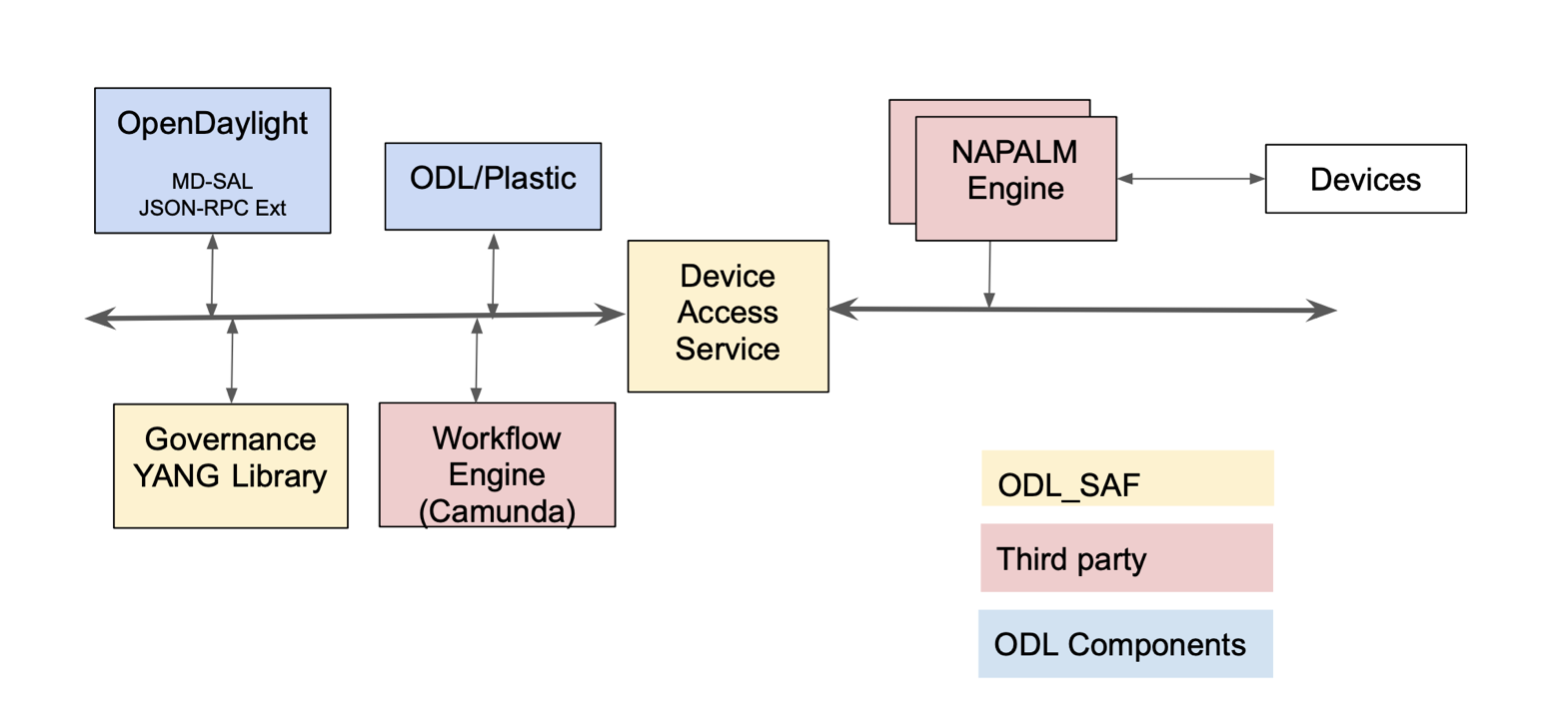Name
ODL SAF (Service Automation Framework), as in “OpenDaylight Service Automation Framework”
Repo Name
odlsaf
Description
SAF is a service automation framework built to extend the capabilities of OpenDaylight to help Service Providers and Enterprises automate service provisioning and monitoring. With complete life cycle management for service definitions, services can be provisioned using YANG and then translated and mapped to individual devices via any southbound interface.
SAF is integrated with Camunda workflow engine and leverages the industry-recognized BPMN. The BPMN patterns that are relevant to service automation have been identified and implemented. This additionally provides asynchronous transaction queuing functionality (& history) not available currently in ODL itself.
SAF is integrated with OpenDaylight Plastic to provide the seamless capability to translate config from vendor-specific to a neutral, common way of managing device config.
To provide better control and provisioning of any network functions (PNF/VNF/CNF), SAF has the transaction management capabilities listed below:
- pre-config
- post-config
- rollback
- cancel
SAF is fully compatible with OpenConfig YANG models.
SAF is integrated with Napalm and ntc-rosetta to provide the ability to manage multi-vendor devices seamlessly via CLI-YANG.
SAF is based on Microservice architecture and deployment is based on K8S.
Scope
This would be an OpenDaylight Self managed Project.
The scope of the proposal is to open source all of the SAF components and the integration layers between Camunda, NAPALM and ntc-rosetta.
This includes the following :
- WFE API that has the capability to create Workflow and associate with devices
- Predefined Java and Python Camunda delegates/scripts for transaction management
- APIs to leverage ODL Plastic
- Governance for Service discovery
- DeviceDB for inventory management
- OpenConfig YANG models and mapping functions
Resources Committed (developers committed to working)
- Prem Sankar Gopannan - pgopannan@luminanetworks.com
- Jeff Hartley - jhartley@luminanetworks.com
- Richard Kosegi - richard.kosegi@gmail.com
- Mahesh L - mahesh.lokhande@luminanetworks.com
- Sowmiya P - spichandi@luminanetworks.com
- Pravin - pdamodaran@luminanetworks.com
- Kangasundaram (QA) - kks@luminanetworks.com
Initial Committers
- Prem Sankar Gopannan - pgopannan@luminanetworks.com
- Jeff Hartley - jhartley@luminanetworks.com
- Richard Kosegi - richard.kosegi@gmail.com
- Mahesh L - mahesh.lokhande@luminanetworks.com
- Sowmiya P - spichandi@luminanetworks.com
- Pravin - pdamodaran@luminanetworks.com
- Kangasundaram (QA) - kks@luminanetworks.com
Vendor Neutral
License is compatible (Eclipse Public License - v 1.0)

4 Comments
Abhijit Kumbhare
The name sounds too much like OpenSAF (https://en.wikipedia.org/wiki/OpenSAF). Maybe Service Automation Architecture or System? Or Framework for Service Automation?
Jeff Hartley
We're certainly open to suggestions; keep them coming!
Olivier Dugeon
The proposal sounds very good, and I have just some questions:
Jeff Hartley